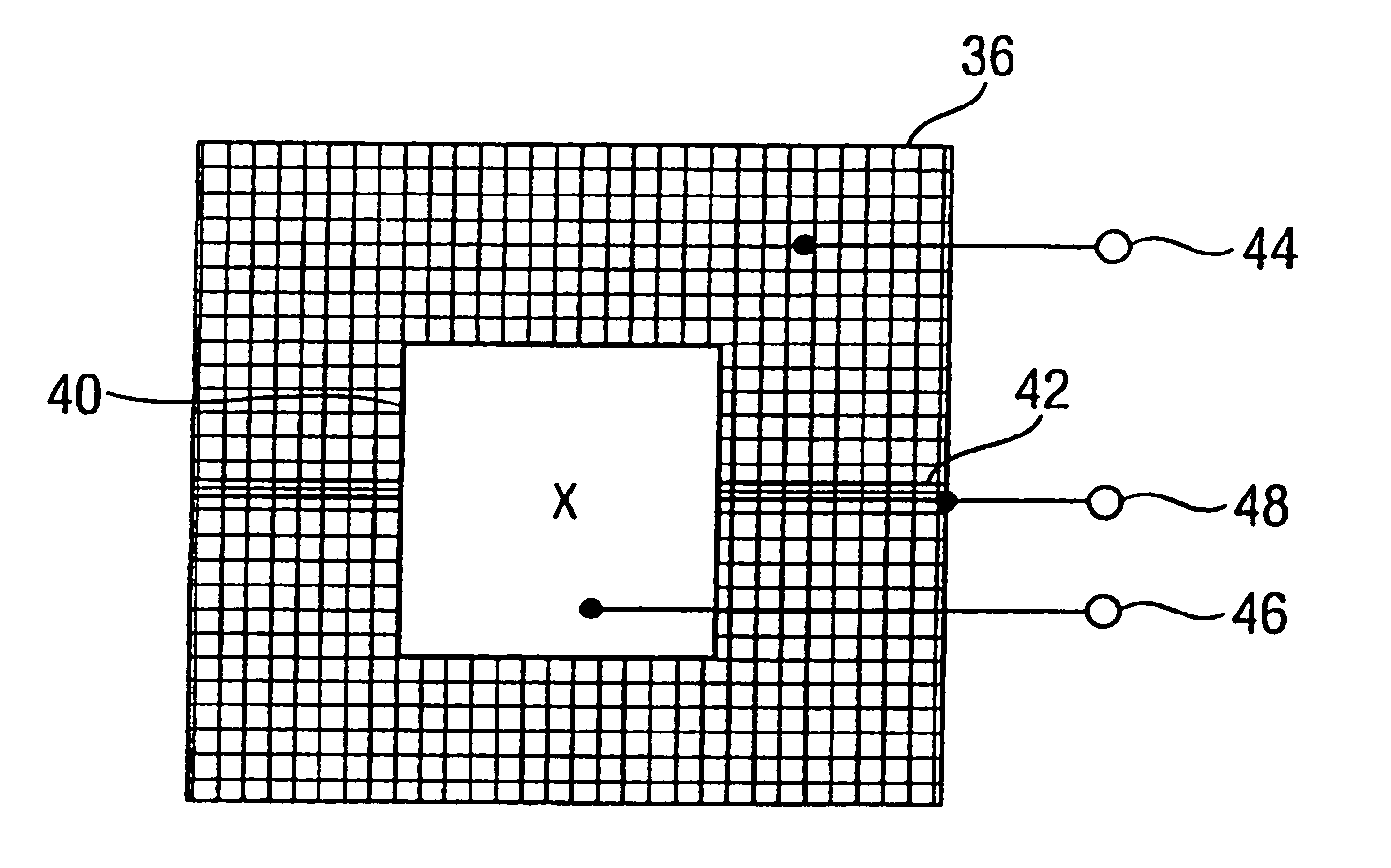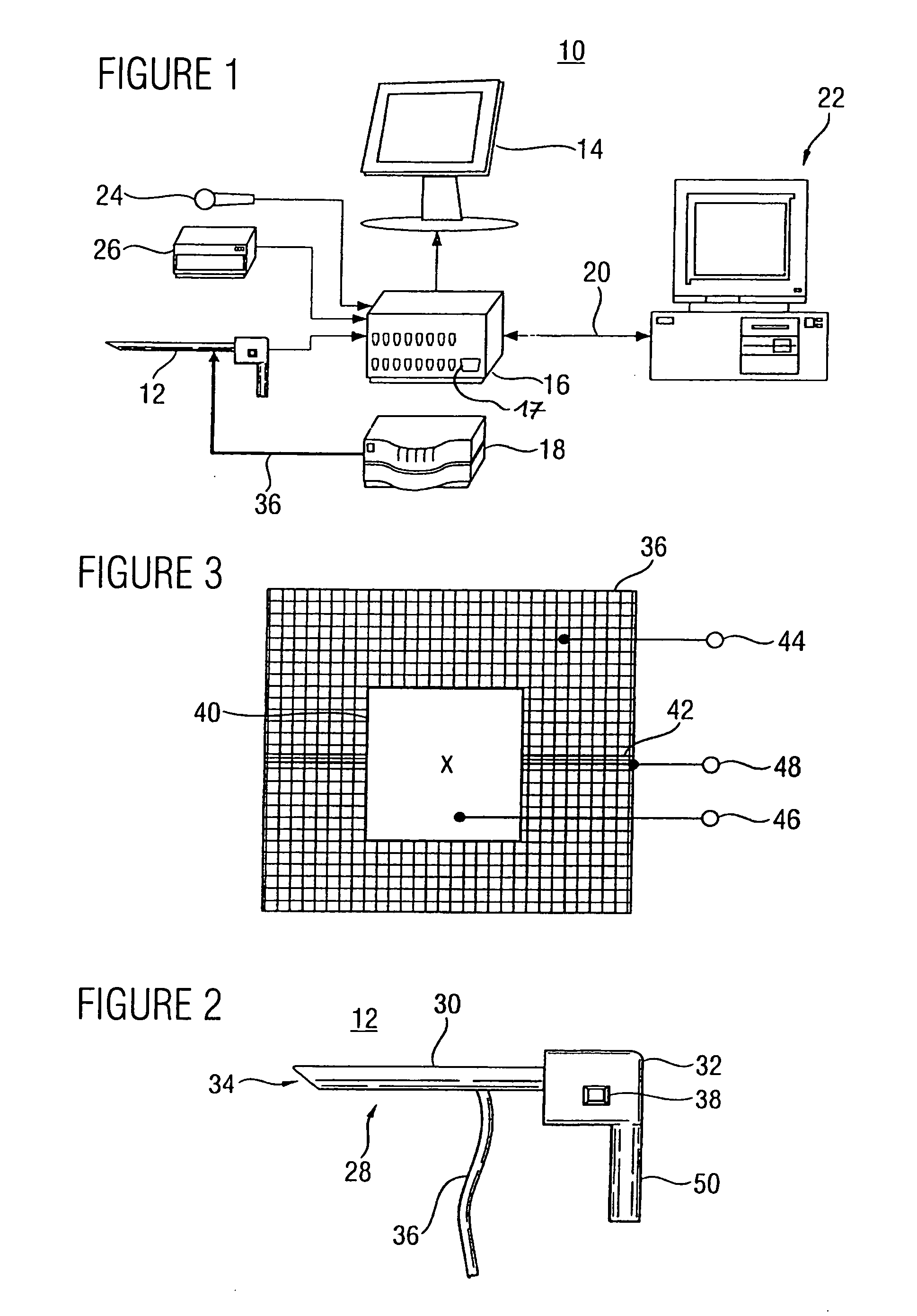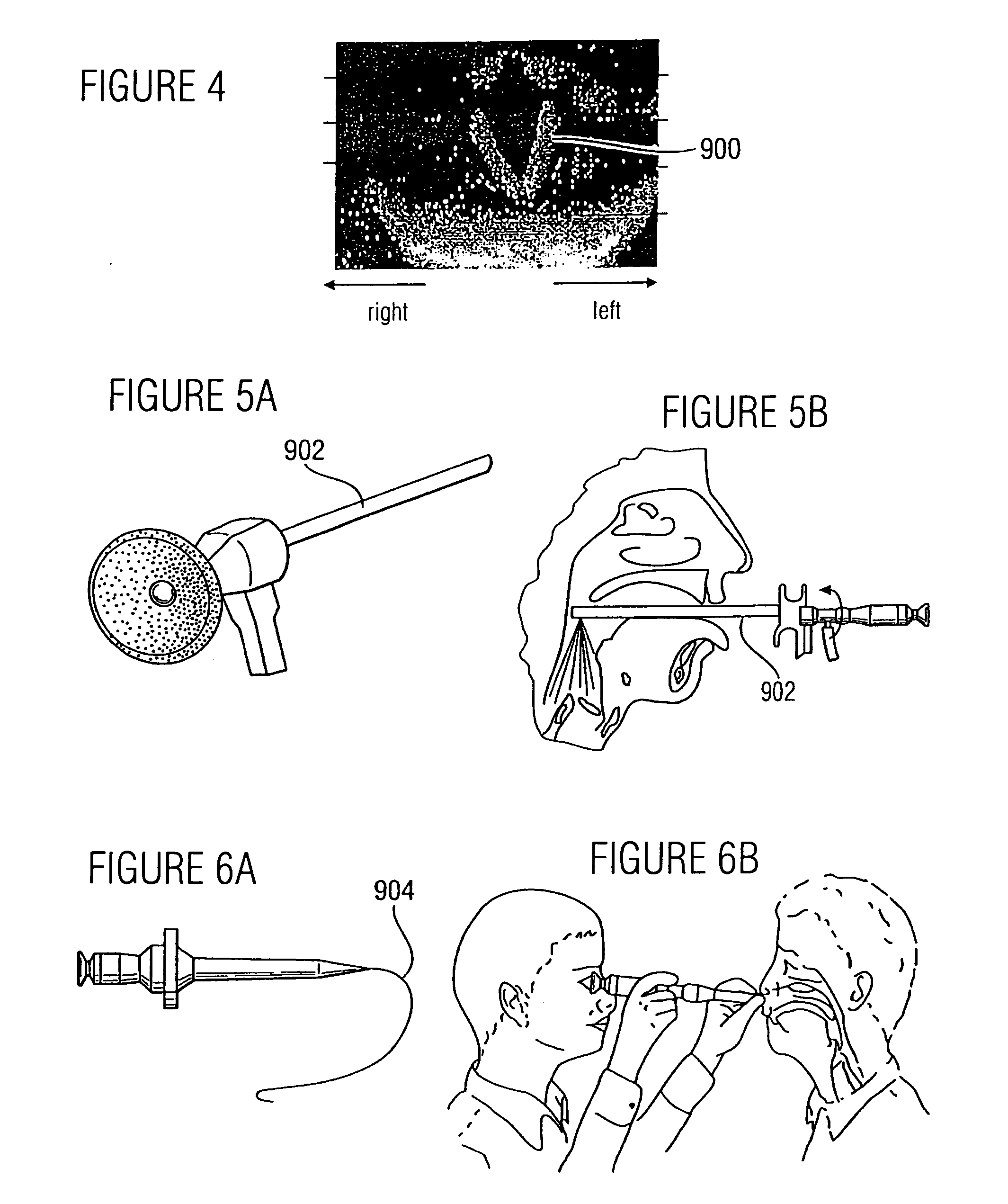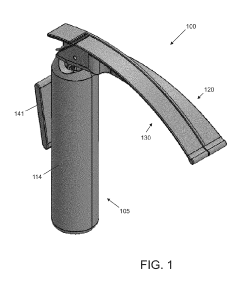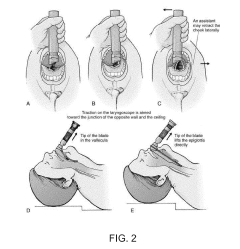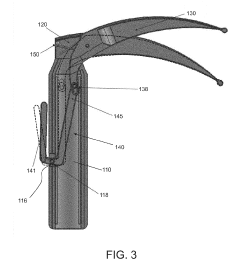Laryngoscope research methodologies: Current and emerging practices.
JUL 15, 20258 MIN READ
Generate Your Research Report Instantly with AI Agent
Patsnap Eureka helps you evaluate technical feasibility & market potential.
Laryngoscope Evolution
The evolution of laryngoscopes has been a remarkable journey, spanning over two centuries of medical innovation. The first documented use of a device resembling a laryngoscope dates back to 1844 when Manuel García, a Spanish vocal pedagogue, used a dental mirror to observe his own larynx. This primitive technique laid the foundation for future advancements in laryngoscopy.
In the late 19th century, significant progress was made with the introduction of indirect laryngoscopy. Johann Czermak and Ludwig Türck independently developed methods using mirrors to reflect light onto the larynx, allowing for better visualization. This technique, although revolutionary, had limitations in terms of image quality and ease of use.
The early 20th century saw the advent of direct laryngoscopy, a major breakthrough in the field. Chevalier Jackson, an American laryngologist, developed the first practical direct laryngoscope in 1903. This innovation allowed for direct visualization of the larynx and vocal cords, greatly improving diagnostic and therapeutic capabilities.
The mid-20th century brought about the development of flexible fiberoptic laryngoscopes. Introduced in the 1960s, these devices utilized bundles of optical fibers to transmit images, offering unprecedented flexibility and access to difficult-to-reach areas of the airway. This technology significantly enhanced the ability to perform examinations and procedures in conscious patients.
The late 20th and early 21st centuries have seen rapid advancements in video laryngoscopy. The integration of miniature cameras and high-resolution displays has revolutionized the field, providing superior image quality and the ability to record and share examinations. Video laryngoscopes have become increasingly popular in both routine and difficult airway management scenarios.
Recent years have witnessed the emergence of augmented reality (AR) and artificial intelligence (AI) in laryngoscopy. AR systems can overlay real-time information onto the laryngoscopic view, assisting in navigation and decision-making. AI algorithms are being developed to aid in the interpretation of laryngoscopic images, potentially enhancing diagnostic accuracy and efficiency.
The evolution of laryngoscopes continues with ongoing research into novel materials, improved ergonomics, and enhanced imaging technologies. Current trends include the development of disposable laryngoscopes to reduce infection risks, the integration of 3D imaging for improved depth perception, and the exploration of robotic-assisted laryngoscopy for complex procedures.
In the late 19th century, significant progress was made with the introduction of indirect laryngoscopy. Johann Czermak and Ludwig Türck independently developed methods using mirrors to reflect light onto the larynx, allowing for better visualization. This technique, although revolutionary, had limitations in terms of image quality and ease of use.
The early 20th century saw the advent of direct laryngoscopy, a major breakthrough in the field. Chevalier Jackson, an American laryngologist, developed the first practical direct laryngoscope in 1903. This innovation allowed for direct visualization of the larynx and vocal cords, greatly improving diagnostic and therapeutic capabilities.
The mid-20th century brought about the development of flexible fiberoptic laryngoscopes. Introduced in the 1960s, these devices utilized bundles of optical fibers to transmit images, offering unprecedented flexibility and access to difficult-to-reach areas of the airway. This technology significantly enhanced the ability to perform examinations and procedures in conscious patients.
The late 20th and early 21st centuries have seen rapid advancements in video laryngoscopy. The integration of miniature cameras and high-resolution displays has revolutionized the field, providing superior image quality and the ability to record and share examinations. Video laryngoscopes have become increasingly popular in both routine and difficult airway management scenarios.
Recent years have witnessed the emergence of augmented reality (AR) and artificial intelligence (AI) in laryngoscopy. AR systems can overlay real-time information onto the laryngoscopic view, assisting in navigation and decision-making. AI algorithms are being developed to aid in the interpretation of laryngoscopic images, potentially enhancing diagnostic accuracy and efficiency.
The evolution of laryngoscopes continues with ongoing research into novel materials, improved ergonomics, and enhanced imaging technologies. Current trends include the development of disposable laryngoscopes to reduce infection risks, the integration of 3D imaging for improved depth perception, and the exploration of robotic-assisted laryngoscopy for complex procedures.
Clinical Demand Analysis
The clinical demand for advanced laryngoscope research methodologies continues to grow as healthcare providers seek more effective and efficient ways to manage airway-related procedures. This demand is driven by several factors, including the increasing prevalence of complex airway cases, the need for improved patient outcomes, and the desire for more ergonomic and user-friendly devices.
One of the primary drivers of demand is the rising incidence of difficult airway management scenarios. As the global population ages and obesity rates increase, healthcare professionals are encountering more challenging intubation cases. This has led to a surge in interest for laryngoscope technologies that can provide better visualization and maneuverability in complex anatomical situations.
The push for enhanced patient safety is another significant factor fueling the demand for innovative laryngoscope research. Healthcare institutions are increasingly focused on reducing complications associated with intubation procedures, such as dental trauma, soft tissue injury, and failed intubations. This has created a market for laryngoscopes that offer gentler insertion techniques and real-time feedback mechanisms to guide practitioners.
In the realm of medical education and training, there is a growing need for laryngoscope research methodologies that can simulate a wide range of clinical scenarios. This demand stems from the recognition that hands-on experience with various airway management techniques is crucial for developing competent healthcare professionals. As a result, there is increasing interest in virtual reality and augmented reality applications for laryngoscope training.
The COVID-19 pandemic has also significantly impacted the demand for advanced laryngoscope technologies. The heightened focus on infection control and the need for rapid, safe intubation of critically ill patients has accelerated research into disposable laryngoscope designs and remote-controlled devices that minimize healthcare worker exposure.
From a market perspective, the global laryngoscope market is expected to experience substantial growth in the coming years. This growth is attributed to the increasing number of surgical procedures, advancements in healthcare infrastructure, and the rising adoption of minimally invasive techniques. Emerging economies, in particular, are showing a strong demand for modern laryngoscope technologies as they upgrade their healthcare systems.
The shift towards value-based healthcare models is also influencing laryngoscope research priorities. Healthcare providers are seeking devices that not only improve clinical outcomes but also offer cost-effectiveness and efficiency. This has led to a demand for multifunctional laryngoscopes that can integrate various diagnostic and therapeutic capabilities, potentially reducing the need for multiple devices and procedures.
One of the primary drivers of demand is the rising incidence of difficult airway management scenarios. As the global population ages and obesity rates increase, healthcare professionals are encountering more challenging intubation cases. This has led to a surge in interest for laryngoscope technologies that can provide better visualization and maneuverability in complex anatomical situations.
The push for enhanced patient safety is another significant factor fueling the demand for innovative laryngoscope research. Healthcare institutions are increasingly focused on reducing complications associated with intubation procedures, such as dental trauma, soft tissue injury, and failed intubations. This has created a market for laryngoscopes that offer gentler insertion techniques and real-time feedback mechanisms to guide practitioners.
In the realm of medical education and training, there is a growing need for laryngoscope research methodologies that can simulate a wide range of clinical scenarios. This demand stems from the recognition that hands-on experience with various airway management techniques is crucial for developing competent healthcare professionals. As a result, there is increasing interest in virtual reality and augmented reality applications for laryngoscope training.
The COVID-19 pandemic has also significantly impacted the demand for advanced laryngoscope technologies. The heightened focus on infection control and the need for rapid, safe intubation of critically ill patients has accelerated research into disposable laryngoscope designs and remote-controlled devices that minimize healthcare worker exposure.
From a market perspective, the global laryngoscope market is expected to experience substantial growth in the coming years. This growth is attributed to the increasing number of surgical procedures, advancements in healthcare infrastructure, and the rising adoption of minimally invasive techniques. Emerging economies, in particular, are showing a strong demand for modern laryngoscope technologies as they upgrade their healthcare systems.
The shift towards value-based healthcare models is also influencing laryngoscope research priorities. Healthcare providers are seeking devices that not only improve clinical outcomes but also offer cost-effectiveness and efficiency. This has led to a demand for multifunctional laryngoscopes that can integrate various diagnostic and therapeutic capabilities, potentially reducing the need for multiple devices and procedures.
Technical Challenges
Laryngoscopy research methodologies face several significant technical challenges that hinder progress in this critical field of medical diagnostics. One of the primary obstacles is the limited field of view provided by traditional laryngoscopes. This constraint often results in incomplete visualization of the larynx and surrounding structures, potentially leading to missed diagnoses or complications during procedures.
Another major challenge lies in the image quality obtained during laryngoscopy. Factors such as patient movement, secretions, and suboptimal lighting conditions can compromise the clarity and resolution of the images. This issue is particularly pronounced in video laryngoscopy, where maintaining consistent image quality throughout the procedure is crucial for accurate diagnosis and treatment.
The ergonomics of laryngoscope design also present ongoing challenges. Many practitioners report discomfort and fatigue during prolonged use, which can affect the precision and effectiveness of the examination. Additionally, the learning curve associated with mastering laryngoscopy techniques remains steep, particularly for newer, more advanced devices.
Infection control is another critical concern in laryngoscopy research. The need for thorough sterilization between patients can lead to increased downtime and costs. Developing materials and designs that facilitate easier cleaning and sterilization without compromising functionality is an ongoing challenge for researchers and manufacturers.
In the realm of pediatric laryngoscopy, size constraints pose significant technical hurdles. Creating devices that are small enough for use in infants and young children while maintaining necessary functionality and image quality requires innovative engineering solutions.
The integration of advanced imaging technologies, such as narrow-band imaging (NBI) and optical coherence tomography (OCT), into laryngoscopes presents both opportunities and challenges. While these technologies offer enhanced visualization capabilities, their implementation often increases device complexity and cost, potentially limiting widespread adoption.
Data management and analysis represent emerging challenges in laryngoscopy research. As digital laryngoscopes become more prevalent, the volume of image and video data generated during procedures is increasing exponentially. Developing efficient systems for storing, processing, and analyzing this data to extract meaningful insights is a growing area of focus.
Lastly, the pursuit of non-invasive or minimally invasive laryngoscopy techniques continues to challenge researchers. Balancing the need for comprehensive examination with patient comfort and reduced procedural risks remains an ongoing area of investigation, driving the exploration of novel approaches and technologies in laryngoscopy research methodologies.
Another major challenge lies in the image quality obtained during laryngoscopy. Factors such as patient movement, secretions, and suboptimal lighting conditions can compromise the clarity and resolution of the images. This issue is particularly pronounced in video laryngoscopy, where maintaining consistent image quality throughout the procedure is crucial for accurate diagnosis and treatment.
The ergonomics of laryngoscope design also present ongoing challenges. Many practitioners report discomfort and fatigue during prolonged use, which can affect the precision and effectiveness of the examination. Additionally, the learning curve associated with mastering laryngoscopy techniques remains steep, particularly for newer, more advanced devices.
Infection control is another critical concern in laryngoscopy research. The need for thorough sterilization between patients can lead to increased downtime and costs. Developing materials and designs that facilitate easier cleaning and sterilization without compromising functionality is an ongoing challenge for researchers and manufacturers.
In the realm of pediatric laryngoscopy, size constraints pose significant technical hurdles. Creating devices that are small enough for use in infants and young children while maintaining necessary functionality and image quality requires innovative engineering solutions.
The integration of advanced imaging technologies, such as narrow-band imaging (NBI) and optical coherence tomography (OCT), into laryngoscopes presents both opportunities and challenges. While these technologies offer enhanced visualization capabilities, their implementation often increases device complexity and cost, potentially limiting widespread adoption.
Data management and analysis represent emerging challenges in laryngoscopy research. As digital laryngoscopes become more prevalent, the volume of image and video data generated during procedures is increasing exponentially. Developing efficient systems for storing, processing, and analyzing this data to extract meaningful insights is a growing area of focus.
Lastly, the pursuit of non-invasive or minimally invasive laryngoscopy techniques continues to challenge researchers. Balancing the need for comprehensive examination with patient comfort and reduced procedural risks remains an ongoing area of investigation, driving the exploration of novel approaches and technologies in laryngoscopy research methodologies.
Current Research Approaches
01 Improved visualization and illumination
Modern laryngoscopes incorporate advanced lighting and imaging technologies to enhance visibility during intubation procedures. These improvements may include LED lighting, fiber optic systems, or integrated cameras to provide clearer views of the larynx and surrounding structures.- Illumination systems for laryngoscopes: Modern laryngoscopes incorporate advanced illumination systems to improve visibility during intubation procedures. These systems may include LED lights, fiber optic cables, or other innovative lighting technologies to provide clear and adjustable illumination of the laryngeal area. Enhanced lighting helps medical professionals to navigate the airway more effectively and safely.
- Video laryngoscopes with integrated cameras: Video laryngoscopes feature integrated cameras that transmit real-time images to a display screen. This technology allows for improved visualization of the airway and vocal cords during intubation, especially in difficult cases. The video feed can be used for documentation, teaching purposes, or remote assistance. Some models may include image enhancement features or recording capabilities.
- Disposable and sterile laryngoscope components: To address infection control concerns, many laryngoscopes now incorporate disposable or easily sterilizable components. This may include single-use blades, handles, or covers that can be discarded after each use. Some designs feature modular construction that allows for easy disassembly and thorough cleaning of reusable parts, ensuring better hygiene and reducing the risk of cross-contamination between patients.
- Ergonomic design and handle improvements: Advancements in laryngoscope design focus on improving ergonomics and user comfort. This includes redesigned handles with better grip, reduced weight, and improved balance. Some models feature adjustable angles or flexible components to accommodate different user preferences and patient anatomies. These ergonomic improvements aim to reduce operator fatigue and enhance precision during intubation procedures.
- Integration of advanced sensors and monitoring: Modern laryngoscopes may incorporate various sensors and monitoring capabilities to provide additional data during intubation. This can include pressure sensors to measure the force applied during the procedure, oxygen saturation monitors, or even augmented reality features to guide proper placement. These advanced features aim to improve the safety and success rate of intubations, particularly in challenging cases.
02 Disposable and sterile components
To reduce the risk of cross-contamination and improve hygiene, many laryngoscopes now feature disposable blades or sheaths. These single-use components can be easily replaced between patients, ensuring a sterile environment for each procedure.Expand Specific Solutions03 Ergonomic design and handling
Laryngoscopes are being designed with improved ergonomics to enhance user comfort and control during procedures. This may include adjustable handles, lightweight materials, and optimized blade shapes to facilitate easier insertion and manipulation.Expand Specific Solutions04 Integration of video and digital technologies
Video laryngoscopes incorporate small cameras and screens to provide real-time visual feedback during intubation. These devices may also include features such as image capture, recording capabilities, and connectivity options for training and documentation purposes.Expand Specific Solutions05 Specialized blade designs
Laryngoscope blades are being developed in various shapes and sizes to accommodate different patient anatomies and specific clinical scenarios. These may include curved or straight blades, as well as those designed for difficult airways or pediatric use.Expand Specific Solutions
Key Laryngoscope Manufacturers
The laryngoscope research field is in a mature stage, with a global market size estimated to reach $795 million by 2025. Technological advancements are driving growth, particularly in video laryngoscopes. Key players like Olympus Medical Systems, Covidien AG, and Flexicare Group are leading innovation, focusing on improving visualization and ease of use. Universities such as Xiamen University and University of Washington are contributing to research methodologies. The industry is seeing a shift towards disposable devices and AI integration, with companies like Zhejiang Youyi Medical Equipment developing intelligent simulators. Overall, the competitive landscape is characterized by established medical device manufacturers and emerging specialized firms, with ongoing research collaborations between industry and academia.
Covidien AG
Technical Solution: Covidien, now part of Medtronic, is advancing laryngoscope research through a multidisciplinary approach. Their methodology includes the development of hybrid laryngoscopes that combine the benefits of direct and video laryngoscopy[10]. They are investigating the use of disposable laryngoscope blades with integrated cameras to reduce the risk of cross-contamination while maintaining high-quality imaging[12]. Covidien is also exploring the integration of capnography sensors into laryngoscope blades for real-time confirmation of proper tube placement[14]. Their research extends to the development of laryngoscopes with adjustable blade angles to accommodate different patient anatomies and intubation scenarios[16].
Strengths: Extensive resources as part of Medtronic, strong distribution network, and comprehensive product portfolio. Weaknesses: Potential for bureaucratic delays in bringing new technologies to market, challenge of maintaining innovation post-merger.
Flexicare (Group) Ltd.
Technical Solution: Flexicare is focusing on innovative laryngoscope designs for specialized clinical applications. Their research methodology emphasizes the development of laryngoscopes for difficult airway management in pediatric and neonatal patients[15]. They are investigating the use of soft, pliable materials for laryngoscope blades to reduce the risk of trauma during intubation[17]. Flexicare is also exploring the integration of temperature sensors in laryngoscope blades to monitor and prevent potential thermal injury during prolonged procedures[19]. Their research includes the development of laryngoscopes with integrated suction channels to improve visualization in cases of excessive secretions or bleeding[21].
Strengths: Specialization in niche markets, focus on patient safety, and innovative material science applications. Weaknesses: Limited market share in general-purpose laryngoscopes, potential for higher production costs due to specialized designs.
Innovative Laryngoscope Designs
Image recording device having several image recording modes
PatentInactiveUS20050219376A1
Innovation
- A multi-mode image recording device with a pixel array that switches between low-resolution, high-spatial-resolution mode; high-resolution, high-temporal-resolution mode; and one-dimensional, high-temporal-resolution mode, enabling effective examination of vocal folds with adjustable sampling frequencies to capture oscillations up to 400 Hz.
Laryngoscope with spreadable blades
PatentActiveUS20190175008A1
Innovation
- A laryngoscope with a built-in spreading mechanism featuring a pivotable blade connected to a fixed blade via a pivot rod, activated by a lever arm, allowing the blades to spread apart for improved visualization without obstructing the view, and a pivoting arm within the handle for compactness and sanitation.
Regulatory Framework
The regulatory framework surrounding laryngoscope research methodologies is a critical aspect that researchers and manufacturers must navigate to ensure compliance and patient safety. In the United States, the Food and Drug Administration (FDA) classifies laryngoscopes as Class I medical devices, which are subject to general controls but typically exempt from premarket notification requirements.
However, emerging practices and technological advancements in laryngoscope design may lead to reclassification or additional regulatory scrutiny. For instance, video laryngoscopes with integrated cameras and displays may be subject to more stringent controls as Class II devices, requiring premarket notification through the 510(k) process.
Internationally, regulatory bodies such as the European Medicines Agency (EMA) and Japan's Pharmaceuticals and Medical Devices Agency (PMDA) have their own frameworks for laryngoscope approval. The European Union's Medical Device Regulation (MDR) has introduced more rigorous requirements for clinical evidence and post-market surveillance, impacting laryngoscope research and development.
Research methodologies must adhere to Good Clinical Practice (GCP) guidelines, ensuring ethical conduct and data integrity. Institutional Review Board (IRB) approval is mandatory for human subject research involving laryngoscopes, with particular attention to informed consent and risk mitigation strategies.
Quality management systems, such as ISO 13485, play a crucial role in laryngoscope research and manufacturing. These systems ensure consistent product quality and facilitate regulatory compliance across different markets. Researchers must also consider electromagnetic compatibility (EMC) standards, particularly for electronic laryngoscopes, to prevent interference with other medical devices.
As laryngoscope technologies evolve, regulatory frameworks are adapting to address novel features like augmented reality guidance or artificial intelligence-assisted intubation. This dynamic regulatory landscape necessitates ongoing vigilance and adaptation in research methodologies to ensure compliance with evolving standards and maintain market access for innovative laryngoscope designs.
However, emerging practices and technological advancements in laryngoscope design may lead to reclassification or additional regulatory scrutiny. For instance, video laryngoscopes with integrated cameras and displays may be subject to more stringent controls as Class II devices, requiring premarket notification through the 510(k) process.
Internationally, regulatory bodies such as the European Medicines Agency (EMA) and Japan's Pharmaceuticals and Medical Devices Agency (PMDA) have their own frameworks for laryngoscope approval. The European Union's Medical Device Regulation (MDR) has introduced more rigorous requirements for clinical evidence and post-market surveillance, impacting laryngoscope research and development.
Research methodologies must adhere to Good Clinical Practice (GCP) guidelines, ensuring ethical conduct and data integrity. Institutional Review Board (IRB) approval is mandatory for human subject research involving laryngoscopes, with particular attention to informed consent and risk mitigation strategies.
Quality management systems, such as ISO 13485, play a crucial role in laryngoscope research and manufacturing. These systems ensure consistent product quality and facilitate regulatory compliance across different markets. Researchers must also consider electromagnetic compatibility (EMC) standards, particularly for electronic laryngoscopes, to prevent interference with other medical devices.
As laryngoscope technologies evolve, regulatory frameworks are adapting to address novel features like augmented reality guidance or artificial intelligence-assisted intubation. This dynamic regulatory landscape necessitates ongoing vigilance and adaptation in research methodologies to ensure compliance with evolving standards and maintain market access for innovative laryngoscope designs.
Patient Safety Considerations
Patient safety is a paramount concern in laryngoscopy research and practice. The development and evaluation of laryngoscope methodologies must prioritize the well-being and protection of patients undergoing these procedures. Current practices in laryngoscopy have established several key safety considerations that researchers and clinicians must address.
One critical aspect is the minimization of trauma to the airway and surrounding tissues during laryngoscope insertion and manipulation. Researchers are continuously exploring ways to reduce the force applied during laryngoscopy, thereby decreasing the risk of dental damage, soft tissue injury, and post-procedural discomfort. This includes the development of video laryngoscopes with improved blade designs and the incorporation of force sensors to provide real-time feedback to operators.
Infection control is another vital safety consideration in laryngoscopy research. Studies focus on evaluating the efficacy of various sterilization techniques and the development of single-use disposable laryngoscope blades to reduce the risk of cross-contamination between patients. Additionally, researchers are investigating the potential for antimicrobial coatings on reusable laryngoscope components to further enhance infection prevention measures.
The risk of hypoxia during laryngoscopy procedures is a significant concern, particularly in difficult airway scenarios. Current research methodologies are exploring the integration of continuous oxygen saturation monitoring and the development of laryngoscopes with built-in oxygenation capabilities. These advancements aim to maintain adequate oxygenation throughout the procedure, reducing the risk of adverse events related to oxygen deprivation.
Ergonomic considerations in laryngoscope design play a crucial role in patient safety by improving operator performance and reducing the likelihood of procedural complications. Researchers are investigating the impact of handle design, blade curvature, and weight distribution on the ease of use and success rates of laryngoscopy procedures. This includes the development of adjustable laryngoscopes that can be customized to individual patient anatomy and operator preferences.
Emerging practices in laryngoscopy research are increasingly focusing on the integration of artificial intelligence and machine learning algorithms to enhance patient safety. These technologies are being explored for their potential to assist in real-time airway assessment, predict difficult intubations, and guide optimal laryngoscope placement. By providing operators with advanced decision support tools, these innovations aim to reduce the incidence of complications and improve overall patient outcomes.
One critical aspect is the minimization of trauma to the airway and surrounding tissues during laryngoscope insertion and manipulation. Researchers are continuously exploring ways to reduce the force applied during laryngoscopy, thereby decreasing the risk of dental damage, soft tissue injury, and post-procedural discomfort. This includes the development of video laryngoscopes with improved blade designs and the incorporation of force sensors to provide real-time feedback to operators.
Infection control is another vital safety consideration in laryngoscopy research. Studies focus on evaluating the efficacy of various sterilization techniques and the development of single-use disposable laryngoscope blades to reduce the risk of cross-contamination between patients. Additionally, researchers are investigating the potential for antimicrobial coatings on reusable laryngoscope components to further enhance infection prevention measures.
The risk of hypoxia during laryngoscopy procedures is a significant concern, particularly in difficult airway scenarios. Current research methodologies are exploring the integration of continuous oxygen saturation monitoring and the development of laryngoscopes with built-in oxygenation capabilities. These advancements aim to maintain adequate oxygenation throughout the procedure, reducing the risk of adverse events related to oxygen deprivation.
Ergonomic considerations in laryngoscope design play a crucial role in patient safety by improving operator performance and reducing the likelihood of procedural complications. Researchers are investigating the impact of handle design, blade curvature, and weight distribution on the ease of use and success rates of laryngoscopy procedures. This includes the development of adjustable laryngoscopes that can be customized to individual patient anatomy and operator preferences.
Emerging practices in laryngoscopy research are increasingly focusing on the integration of artificial intelligence and machine learning algorithms to enhance patient safety. These technologies are being explored for their potential to assist in real-time airway assessment, predict difficult intubations, and guide optimal laryngoscope placement. By providing operators with advanced decision support tools, these innovations aim to reduce the incidence of complications and improve overall patient outcomes.
Unlock deeper insights with Patsnap Eureka Quick Research — get a full tech report to explore trends and direct your research. Try now!
Generate Your Research Report Instantly with AI Agent
Supercharge your innovation with Patsnap Eureka AI Agent Platform!
